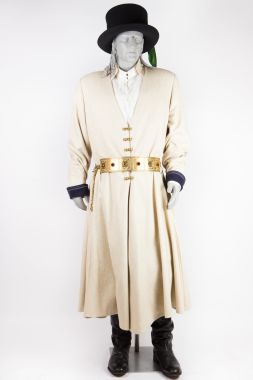Folk costumes
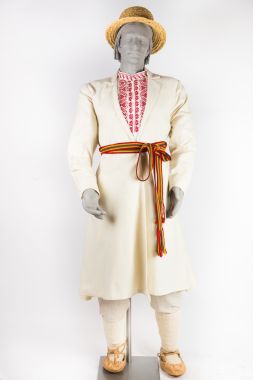
Men's Clothing from Latgale
Latgali no Sēlijas atdala Daugava un no Vidzemes — Aiviekste un Pededze. Austrumos Latgale robežojas ar Krievijas Federāciju, dienvidaustrumos ar Baltkrievijas Republiku.
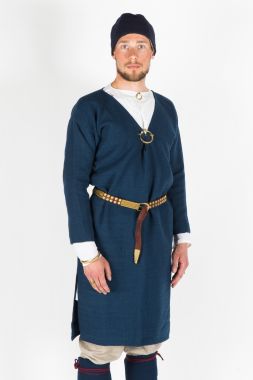
Interpretation of a man’s costume of the 11th -12th century
Men's everyday costume consisted of a linen shirt, woolen trousers, a jacket, leg bindings and a hat. These garments appeared to be free of ethnic variations in style since the clothing was practical and without special decorations. The footwear consisted of leather ankle boots. Outer garments were fastened with a leather belt, which was sometimes decorated with metal bindings. Adornments were used more for practical purposes – pinning up shirts and jackets. They were used in small numbers – sometimes men put on armbands and rings on their fingers. Only members of society with high ranking social status wore a larger number of adornments.
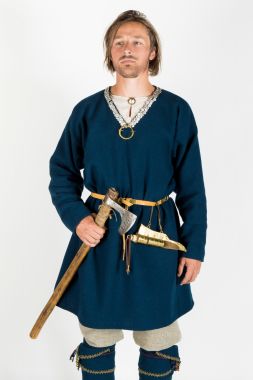
Reconstruction of the 11th century Liv soldier’s costume
Livs made their men's costume reservedly. Only in some cases special decorations have been found. Decorations highlighted the edge of the neckline of their jackets, which were bordered with rows of tin-lead rosettes. The lower part of the jacket neckline was pinned up with a brooch, but a leather belt with a knife hung in an ornamented leather holster that was worn around the waist. There were few adornments for men – only one brooch for fastening the clothing, one or two armbands and a finger-ring.
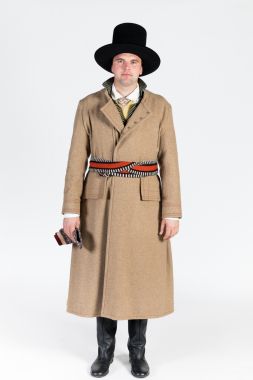
Men's Clothing from Piebalga
Piebalgas tērpu novada centrs ir kādreizējie Cēsu apriņķa Vecpiebalgas un Jaunpiebalgas pagasti, bet tajā ietilpst arī Druvienas, Rankas, Veļķu, Gatartas un Lizuma kādreizējo pagastu teritorijas. Šī novada tērpu izveidi iespaidojis tas, ka Piebalga 19. gadsimtā bija spēcīgs audēju amatnieku centrs.
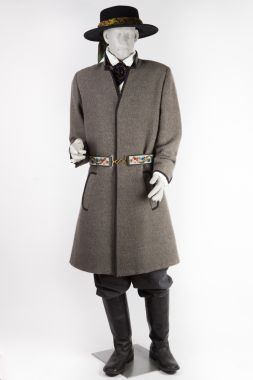
Man's Costume from Zemgale
The men’s clothing from Zemgale is characterized by a linen shirt made of separate, rectangular fabric segments stitched together at the shoulders or a tunic-type shirt where the front and back are made of one contiguous piece of fabric folded over at the shoulders. Shoulder straps are stitched over the seams and fold lines, and there is a one to two centimetre wide banded collar. The shirt is made of fine linen fabric without any embellishment.
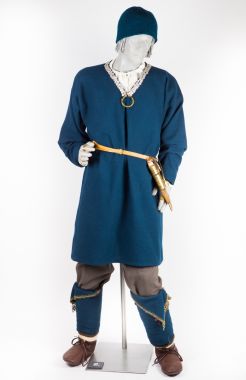
Livonian Men's Clothing
Jau mūsu ēras pirmajos gadu simtos dažādām baltu cilšu grupām bija savdabīgas apģērba, rotāšanās un apbedīšanas tradīcijas. Pēc atrastajām senlietām un audumu fragmentiem iespējams rekonstruēt pat no 7. līdz 13. gadsimtam valkāto apģērbu. Līdz pat 13. gadsimtam kurši mēdza aizgājējus sadedzināt, bet, līdz ar kristietības ienākšanu Latvijas teritorijā, virsroku ņem apbedīšanas tradīcija. Pārsvarā baltu ciltīs mirušos apbedīja, tādejādi ļaujot artefaktiem saglabāties un dot mums kaut nelielu priekšstatu par tā laika apģērbu.
